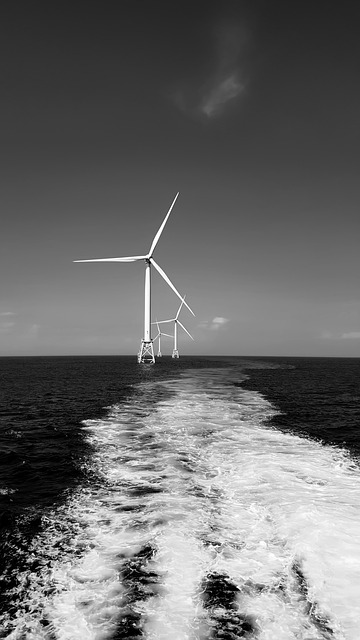The Green Energy Transition: Why Now Is the Time to Embrace Change
As the world grapples with the effects of climate change, dwindling natural resources, and growing energy demands, the call for a green energy transition has never been more urgent. This shift toward sustainable energy sources not only seeks to mitigate the environmental impacts of traditional fossil fuels, but it also promises economic, social, and public health benefits. In this article, we will explore the reasons behind this pressing need for change, the various forms of renewable energy available, and how society can transition smoothly to a greener future.
The Urgency of Climate Change
Climate change is no longer a distant threat; it has become a reality that manifests through extreme weather patterns, rising sea levels, and declining biodiversity. Scientific evidence overwhelmingly shows that the primary driver of these changes is the increase in greenhouse gas emissions caused by human activities, especially the burning of fossil fuels. As global temperatures continue to rise, the scientific community warns that we are approaching critical thresholds that will make reversal increasingly difficult.
The Intergovernmental Panel on Climate Change (IPCC) has made it clear that to prevent catastrophic environmental impacts, global carbon emissions must be reduced significantly. This imperative provides a compelling reason to transition to green energy sources, which can greatly reduce emissions and help combat climate change.
The Economic Case for Green Energy
The transition to renewable energy is also an economic opportunity. Investment in green technologies is on the rise, with solar and wind energy becoming increasingly cost-competitive with traditional fossil fuels. According to a recent report, the cost of solar photovoltaic (PV) technology has decreased by over 80% in the last decade. Meanwhile, onshore wind generation costs have halved. Such price declines make renewable energy not just environmentally responsible but also economically advantageous.
Moreover, the green energy sector is labor-intensive, requiring a vast workforce for installation, maintenance, and innovation. This means that transitioning to renewable energy could create millions of jobs globally, helping to offset job losses in fossil fuel industries. The potential for growth in this sector is immense, with opportunities arising in manufacturing, installation, maintenance, and research and development of advanced energy technologies.
The Social Benefits of Renewable Energy
Beyond the economic advantages, transitioning to green energy brings significant social benefits. By reducing our reliance on fossil fuels, we can decrease air and water pollution, resulting in improved public health outcomes. According to research, air pollution from fossil fuels is linked to hundreds of thousands of premature deaths each year. Investments in green energy not only reduce these health risks but also promote a cleaner and more sustainable environment for future generations.
Furthermore, renewable energy can enhance energy security. As countries continue to face geopolitical tensions over fossil fuel resources, a transition to domestically generated renewable energy can reduce dependence on imported fuels. This shift not only fosters energy independence but also stabilizes energy prices and decreases vulnerability to supply disruptions.
Types of Renewable Energy Sources
The green energy transition includes various renewable energy sources, each with unique advantages and applications. Understanding the available technologies is essential for effective implementation.
Solar Energy
Solar energy harnesses the power of the sun through photovoltaic panels or solar thermal systems. With abundant sunlight available, especially in sunny regions, solar energy is a highly accessible and sustainable energy source. Advances in technology have made solar panels more efficient and affordable, making this option appealing for residential, commercial, and utility-scale projects.
Wind Energy
Wind energy captures the kinetic energy from wind through turbines, converting it into electricity. Wind farms can be located onshore or offshore, with offshore wind farms benefiting from stronger and more consistent winds. Countries like Denmark and Germany have made substantial investments in wind energy, significantly contributing to their national energy supply.
Hydropower
Hydropower is one of the oldest and most established forms of renewable energy. It harnesses the energy of flowing water, typically through large dams or run-of-the-river operations. While hydropower is highly efficient, it must be managed carefully to mitigate environmental impacts and preserve aquatic ecosystems.
Geothermal Energy
Geothermal energy exploits heat from beneath the Earth’s surface to generate electricity and provide direct heating. This resource is particularly effective in regions with significant volcanic activity. Geothermal energy is sustainable and has a very low environmental footprint, making it an attractive alternative energy source.
Biomass
Biomass energy derives from organic materials such as wood, agricultural residues, or waste. It can be converted into biofuels, biogas, or used directly for heating and electricity generation. While biomass can be renewable, it is vital to ensure sustainable sourcing practices to avoid deforestation or competition with food production.
Challenges to the Green Energy Transition
While the green energy transition presents enormous potential, it is not without challenges. Integrating renewable energy into existing energy systems requires investments in infrastructure, grid modernization, and energy storage technologies. The intermittent nature of solar and wind energy necessitates advancements in energy storage solutions, such as batteries, to ensure reliable supply during periods of low generation.
Moreover, the transition may face political resistance from established fossil fuel interests, which might hinder policy and investment in renewables. Overcoming these barriers will require strong leadership, public support, and collaboration across sectors and borders.
The Role of Policy and Regulation
Government policy plays a pivotal role in facilitating the green energy transition. Supportive regulations, incentives, and subsidies can encourage investment in renewable energy projects while discouraging reliance on fossil fuels. Policies such as feed-in tariffs, renewable portfolio standards, and carbon pricing can drive the adoption of clean energy and inspire innovation in energy technology.
International agreements like the Paris Agreement underline the commitment of nations to limit global warming and emphasize the collective responsibility to transition towards a sustainable energy future. Cooperation among countries, regions, and sectors is essential for achieving shared climate goals and transitioning to a low-carbon economy.
Taking Action: How Individuals Can Contribute
While large-scale institutional changes are crucial for the green energy transition, individual action is equally important. Simple lifestyle changes can significantly reduce personal carbon footprints. Using energy-efficient appliances, adopting carpooling or public transport, supporting local renewable energy initiatives, and actively participating in community clean energy projects are just a few ways individuals can contribute.
The Future of Green Energy
The future of energy lies in embracing renewable sources that help create a sustainable world. In the coming years, advancements in technology, decreasing costs, and an increasing awareness of climate challenges will continue to drive the green energy revolution. As we move toward this future, it is essential to prioritize inclusivity in energy access, ensuring that all communities, regardless of socio-economic status, can participate in and benefit from the green transition.
In conclusion, the urgency of climate change coupled with the economic, social, and public health benefits associated with green energy makes this the ideal time to embrace change. By investing in renewable energy technologies and making conscious choices in our daily lives, we can contribute to a sustainable future. The transition to green energy is not merely an environmental imperative; it is an opportunity for innovation, growth, and a better quality of life for all. Together, we can cultivate a world powered by clean, reliable energy—one that nurtures both people and the planet.










